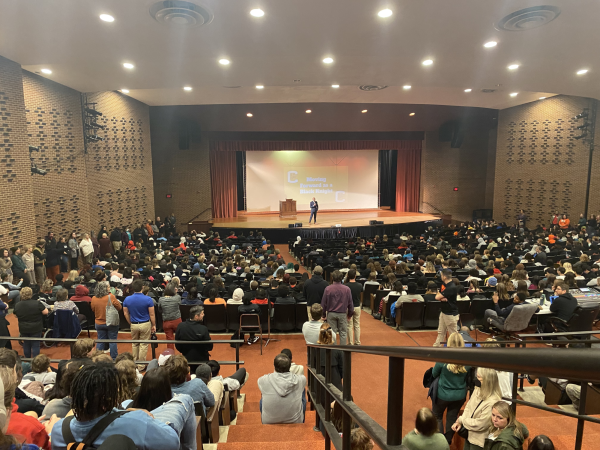Admin Considers Action
January 31, 2019
Roughly two months ago, The New York Times released an article focusing on the wide gap in racial equity and quality of education within the Charlottesville City Schools; it was a piece filled with damning statistics and one that shed more light on many long-standing fissures in the Charlottesville community that still affect race relations and matters of equity. The school system has responded to this by listening and creating discussion in the community around the issues highlighted in the article, in ways such as hosting several community forums, to understand how the community reacted and what actions should be taken next.
Rosa Atkins, the superintendent of the Charlottesville City Schools believes that despite certain positive qualities of the school system that she felt were overlooked, the administration’s biggest job is to move forward towards change. “We can’t be defensive. We have to receive what’s being said, see what’s happening and understand it, and work together to make sure all students have equal opportunities in their education.”
When asked about the equity gaps in the school system, Sarah Elaine Hart, Department Chair of the Counseling Department at Charlottesville High School, acknowledged that “there is clearly a lot yet to be accomplished” when it came to bridging the achievement gap between white and black students. However, she also said that “it is important to note that achievement gaps are not accurate reflections of student ability or potential”, noting that “achievement gaps are the result of a complex system of environmental, cultural, institutional and historical factors.”
Eric Irizarry, the principal at Charlottesville High School, also acknowledged that “the article was multifaceted”, but that the school “own[s] our data and we are striving everyday to ensure all students make progress and achieve.”
There has been significant discussion about the role elementary schools play in the equity gap, particularly in regards to the difference in quality between several of the schools and the role the QUEST program (an academic enrichment program that identifies “gifted”, mostly white students at young ages and puts them on advanced tracks) plays in all of this. Erin Kershner, the principal at Venable Elementary School, admits that “schools […] can serve to perpetuate systemic barriers for students and families of color” and that there are a plethora of indications that “all students are not thriving academically under our care.” However, she also added that “we’ve been working on identifying and remedying opportunity gaps” and that “our QUEST teacher pushes into every classroom weekly in order to help provide additional enrichment, challenge, and critical thinking practice.” Despite this, parents are still skeptical that the program is having any kind of positive impact on these racial barriers.
Many administrators also seemed to feel that some pertinent details were left out of the New York Times article that would have painted a more complete picture of the school system. David Wilkerson, a counselor at Charlottesville High School, said that “a more complete picture would speak to the fact that our graduation rate for all students, and particularly for kids of color, has grown extraordinarily in the last few years” and that he believes “the vast majority of [students] I think would say that C.H.S. has been an opportunity, and a place a growth for them, and a place where they’ve been nurtured and cared for.” Dr. Irizarry also felt that there are “many effective programs in the building to support [all our students], including our Link Crew freshman mentoring program, AVID, and honors-option classes, to name a few”, and that he wishes “the article would have addressed how these programs along with other student supports and a strong staff are increasing achievement and graduation rates at C.H.S.”
When it came to the next steps the administration planned to take to address this issue, there seems to be a collective acknowledgement that the conversation is ongoing and that there are no easy answers. Dr. Atkins said that an important immediate step would be diversifying the curriculum, as well as acknowledging and seeking to eliminate systemic barriers that contribute to this inequity. Similarly, Dr. Kershner felt that the article had raised a “dialog that is happening with our larger community” and that “more people are engaged in and asking questions about our efforts”, ultimately leaving her hopeful about the path the school system is on. At the community forums, several ideas were discussed, such as diversifying libraries and curriculums, equipping teachers to meet the needs of all students, re-examining the QUEST program, hiring and supporting teachers of color, focusing on systemic barriers, and continuing and expanding preschool.
However, all of this talk is useless without affirmative action. Juan Wade, Chair of the School Board, acknowledged this, noting that “conversation and dialogue is important, but it has to result in action”, adding that the school board is “committed to this work.” At this time, the school system is in a “feedback phase”, receiving suggestions and facilitating community discussion, but it remains to be seen exactly what the next steps towards remedying this problem will be.
To read about the community response, look at “Community Reflects on Educational Experience.”














